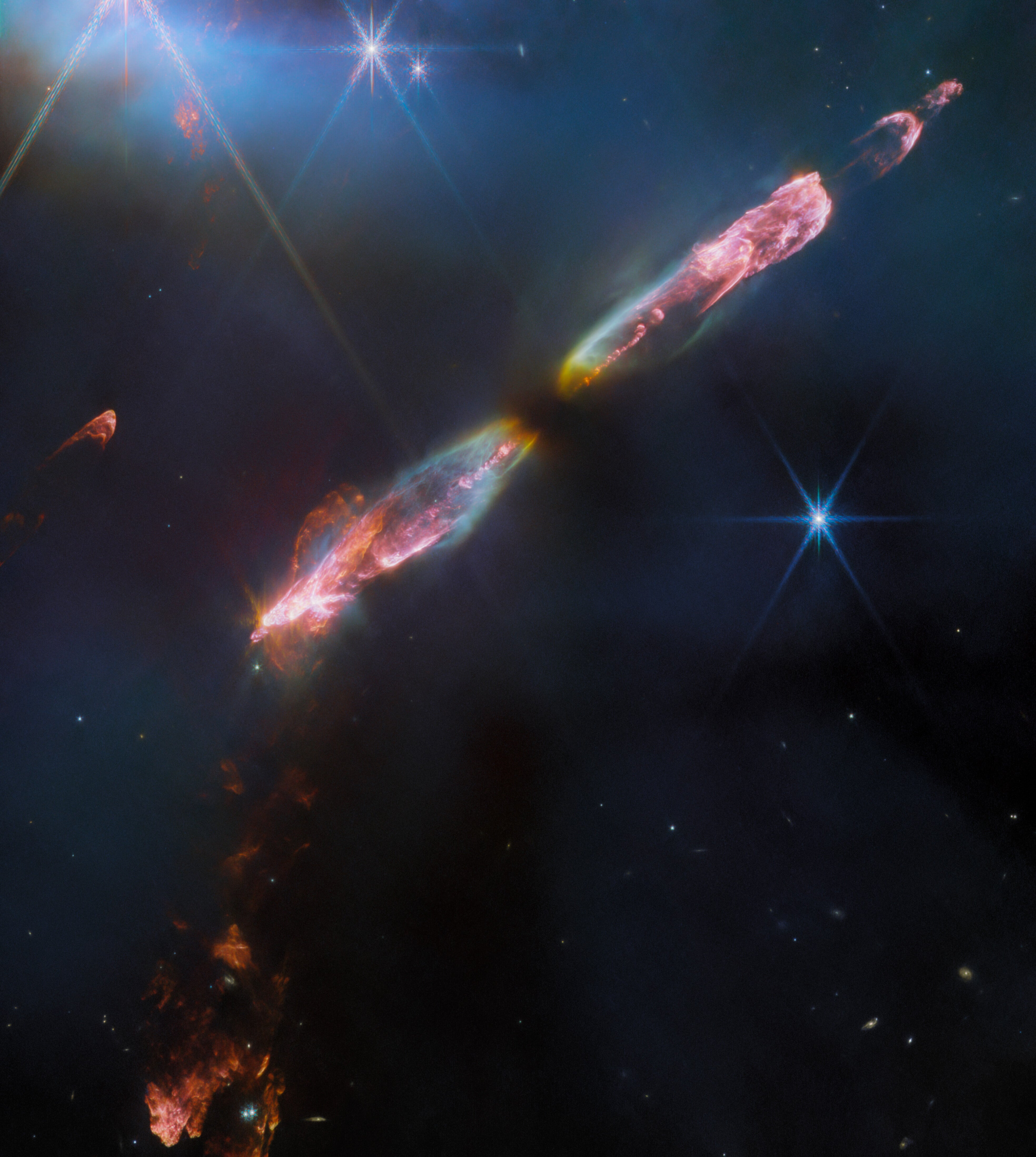
Credit: ESA/Webb, NASA, CSA, T. Ray (Dublin Institute for Advanced Studies)
A striking image made with the James Webb Space Telescope (JWST) reveals intricate details of Herbig-Haro 211 (HH 211), the gaseous outflow surrounding a very young star in its earliest stages. The object is about 1,000 light-years away from Earth in the constellation Perseus. The image shows a gaseous outflow from a young sun that is no more than a few tens of thousands of years old. The star has a mass a mere 8 percent that of the Sun. The gas cloud that makes up HH 211 intrigues astronomers because it provides a look at star system that is still in the latter stages of its formation.
Herbig-Haro objects form when stellar winds or gas jets spew from newborn stars and collide with nearby gas and dust at high speeds. In the new image, a series of bow shocks at lower left and upper right are visible in pinkish-orange colors. Jets of gas expelled by the young, intense star are visible as they slam into the surrounding interstellar medium and light up outflows, according to a NASA press release.
JWST’s ability to use infrared imaging reveals these features in unprecedented detail and is a powerful tool with which to study newborn stars and their outflows. The jet in the image travels at supersonic speeds through space.
Curiously, the protostar captured by JWST may be an unresolved binary star. Scientists have found that the protostar’s outflow is slower than those of other evolved protostars with similar types of flows. They have calculated velocities for the innermost outflow structures visible in the image at 48 to 60 miles (77 to 97 kilometers) per second. Researchers also found that the outflows from younger stars like the one in HH 211 primarily consist of molecules because low shock wave velocities are not powerful enough to disassociate the molecules into atoms and ions.
As a protostar rotates, it generates a powerful magnetic field. The magnetic field also fuels a robust protostellar wind, creating a large outflow of particles into space. Eventually, the protostar will become a main sequence star when its core temperature exceeds 18 million degrees Fahrenheit (10 million degrees Celsius). How long the process takes depends on the mass of the protostar. The more massive the star, the faster it will commence hydrogen fusion. For a star like the Sun, it takes about 50 million years, but the ignition of a high-mass protostar may take only a million years. Stars less massive than the Sun can take over a hundred million years to transform.





